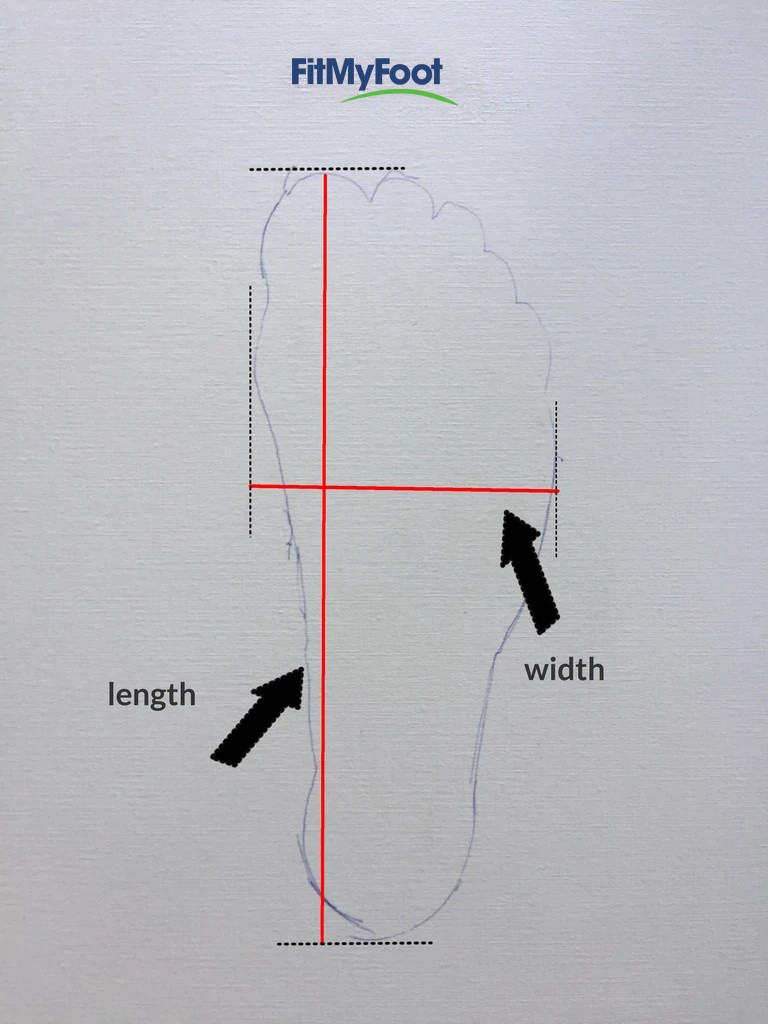Finding the right shoe width is just as crucial as finding the correct shoe size. Wearing shoes that are too narrow or too wide can lead to discomfort, foot pain, and even long-term foot problems. This comprehensive Width Guide For Shoes will help you understand shoe widths, determine your ideal fit, and ensure every step you take is comfortable.
Understanding Shoe Widths: A Key to Comfortable Footwear
Shoe widths are typically indicated by letters, and these vary slightly between men’s and women’s shoes. Generally, widths range from narrow to extra wide. Understanding these designations is the first step in finding your perfect shoe width.
Here’s a breakdown of common shoe width categories:
- Narrow Widths: Often represented by AA or 2A (women’s), or C (men’s). Designed for feet that are slimmer than average.
- Medium Widths: The most common width, usually indicated by B (women’s) or D (men’s). This is considered the standard width that most shoe manufacturers design for.
- Wide Widths: Represented by C/D or D (women’s), or E or 2E (men’s). Designed for feet that are broader than average.
- Extra Wide Widths: Indicated by E or EE (women’s), or 3E, 4E, or wider (men’s). These widths cater to feet that are significantly wider than average.
To give you a clearer picture, here are shoe width charts for both women and men, showing corresponding widths in inches for different US shoe sizes.
Women’s Shoe Width Chart
| Size (US) | A (narrow) | B (medium) | C/D (wide) | E (extra wide) |
|---|---|---|---|---|
| 5 | 2.8″ | 3.2″ | 3.55″ | 3.95″ |
| 6 | 2.95″ | 3.3″ | 3.7″ | 4.05″ |
| 7 | 3.05″ | 3.45″ | 3.8″ | 4.2″ |
| 8 | 3.2″ | 3.55″ | 3.95″ | 4.3″ |
| 9 | 3.3″ | 3.7″ | 4.05″ | 4.45″ |
| 10 | 3.45″ | 3.8″ | 4.2″ | 4.55″ |
| 11 | 3.55″ | 3.95″ | 4.3″ | 4.7″ |
| 12 | 3.7″ | 4.05″ | 4.45″ | 4.8″ |
Men’s Shoe Width Chart
| Size (US) | C (narrow) | D (medium) | E (wide) |
|---|---|---|---|
| 5 | 3.2″ | 3.4″ | 3.6″ |
| 6 | 3.3″ | 3.5″ | 3.7″ |
| 7 | 3.4″ | 3.6″ | 3.8″ |
| 8 | 3.5″ | 3.8″ | 3.9″ |
| 9 | 3.6″ | 3.9″ | 4.1″ |
| 10 | 3.8″ | 4.0″ | 4.2″ |
| 11 | 3.9″ | 4.1″ | 4.3″ |
| 12 | 4.0″ | 4.3″ | 4.4″ |
Keep in mind that shoe width measurements can slightly vary between brands, as there isn’t a universal standard width system across all manufacturers. For the most accurate measurement, consider using tools like the FitMyFoot app, which is readily available for both iOS and Android devices. This app helps you get a precise measurement of your feet, ensuring you choose the right shoe width for optimal comfort.
 FitMyFoot App Logo for Accurate Shoe Width Measurement
FitMyFoot App Logo for Accurate Shoe Width Measurement
Tips for Choosing the Right Shoe Width Based on Your Foot Type
Selecting the correct shoe width is essential for foot health and overall comfort. Here are some specific tips to guide you based on whether you have narrow, medium, or wide feet:
Narrow Feet
If you have narrow feet, shoes that lace up or feature straps, such as ankle or T-bar straps, can be excellent choices. These designs allow for a snug fit, preventing your feet from sliding around inside the shoe. Loafer styles with elasticized or stretchable leather across the arch can also provide a secure fit.
A common misconception is to buy a smaller size for narrow feet, but this often results in toe pinching. Instead, opt for your regular shoe size in a narrow width and consider using orthopedic insoles to further improve the fit and reduce internal volume if needed.
Medium Feet
If you have medium width feet, you’re in luck! Most standard shoe styles are designed to accommodate medium widths. You’ll generally find a wide variety of shoe types and brands that will fit comfortably without requiring special width considerations.
Wide Feet
Finding shoes for wide feet can be more challenging, but it’s definitely possible to find comfortable and stylish options. While sneakers are often a safe bet for wide feet due to their generally wider construction and adjustable fastenings, many brands now offer wider width options in various shoe styles. Brands like Clarks, Merrell, and Keen are known for providing wider fits in many of their shoes.
Barefoot shoes can also be a good option for wide feet as they are designed to mimic the natural shape of the foot, offering more room. However, individuals with wide feet might wear out barefoot shoes quicker due to increased stress on the shoe’s materials. Avoid very flat shoes as they often lack support and can exacerbate discomfort for wider feet. Shoes with adjustable closures like straps or laces are highly recommended for wide feet, providing a customizable and comfortable fit.
For those needing extra room, especially if standard wide sizes still feel tight across the instep, specialty health footwear stores sometimes offer shoes with extra depth.
Conclusion: Step into Comfort with the Right Shoe Width
Choosing the correct shoe width is paramount for foot comfort and health. Pay attention to shoe width designations, utilize width charts and measurement tools when necessary, and consider your foot type when selecting footwear. By prioritizing proper shoe width, you can prevent discomfort, pain, and ensure your shoes feel as good as they look. Remember, the best fit is when your foot aligns flush with the edges of the footbed, feeling comfortable and secure without being restrictive.